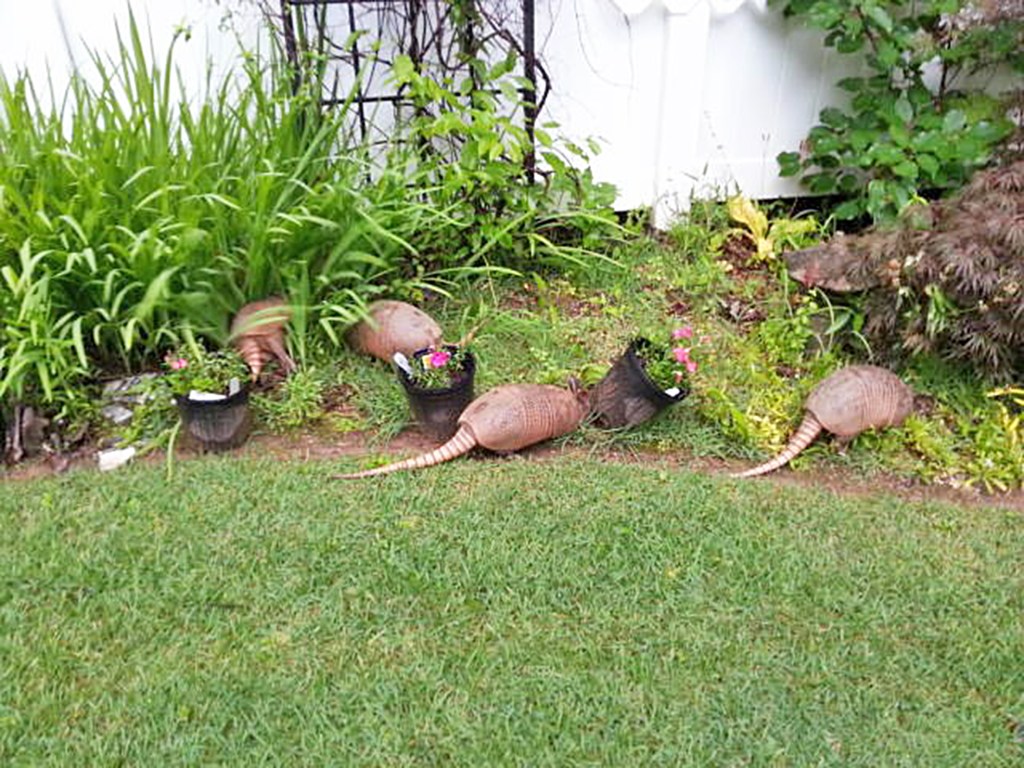Identifying and trapping armadillos
Published 2:00 pm Wednesday, June 12, 2019

- Understanding armadillo behavior is effective in helping trap them.
Armadillos are one of Alabama’s strangest animals. They have a shell like a turtle, and a nose like a pig.
These funny looking creatures are actually a mammal, and they can be very irritating around your home and garden.
Behavior
Armadillos are nocturnal, meaning that they are most active at night. During the day, they stay in burrows. This is also where they raise their young.
Most armadillo damage occurs as a result of their rooting behavior around lawns and gardens. Shallow holes that range from 1-5 inches deep in lawns and gardens are a sure sign that you have armadillos around your home.
These unpleasant holes were left as the armadillo searches for insects, worms, and grubs to feed on during the night. Other armadillo indicators include uprooted flowers and plants, and burrows around foundations or driveways.
Health threats
Along with the damage around your home, armadillos are also known to carry the bacterium associated with human leprosy. However, studies have indicated that infection is often the result of consuming armadillo flesh. Regardless, landowners should use care when handling trapped armadillos.
Trapping
Unfortunately, there are no known repellants to keep pesky armadillos away from your home. Home-remedies such as mothballs or playing a radio are almost never effective. While it can be time-consuming, trapping is the only sure-fire way to control armadillo populations around your home.
The first step to effectively trapping armadillos is to understand their behavior. Sine armadillos feed on worms and insects in the ground, there are no baits proven to be effective. But, since they are nocturnal and have poor eye sight, they often bump into things. Landowners can use this behavior to their advantage, and funnel these critters into traps.
Live-traps normally used to trap raccoons are best, but smaller sizes can be effective if you already have them available. These traps are most effective when “wings” are added to the trap to guide the animals in. These wings can be built using boards, firewood, cinder blocks, fencing or other materials found around the home.
Set these traps where you are having armadillo problems, such as on your lawn, or around your garden. If there is armadillo sign around your house or fence, use it to your advantage. Buildings can be used to funnel armadillos into your trap.
It is best to put out multiple trap sets. Not only do multiple sets increase your odds of trapping success, they also give you the opportunity to trap multiple animals in one night. Often, there is more than one armadillo in an area.
Finally, it is illegal to transport any wildlife in Alabama. Moving wildlife increases the chances of spreading diseases, and transporting pests just makes them someone else’s problem. Therefore, armadillos should be euthanized on site. This can be effectively accomplished with a .22-caliber rifle.
— For information on topics related to the home and garden, contact any office of the Alabama Cooperative Extension System. The Limestone County Office is located at 1109 W. Market St. in Athens. Office hours are 8 a.m. to 4:30 p.m. Mondays through Fridays. For more information, call 256-232-5510 or visit www.aces.edu.





